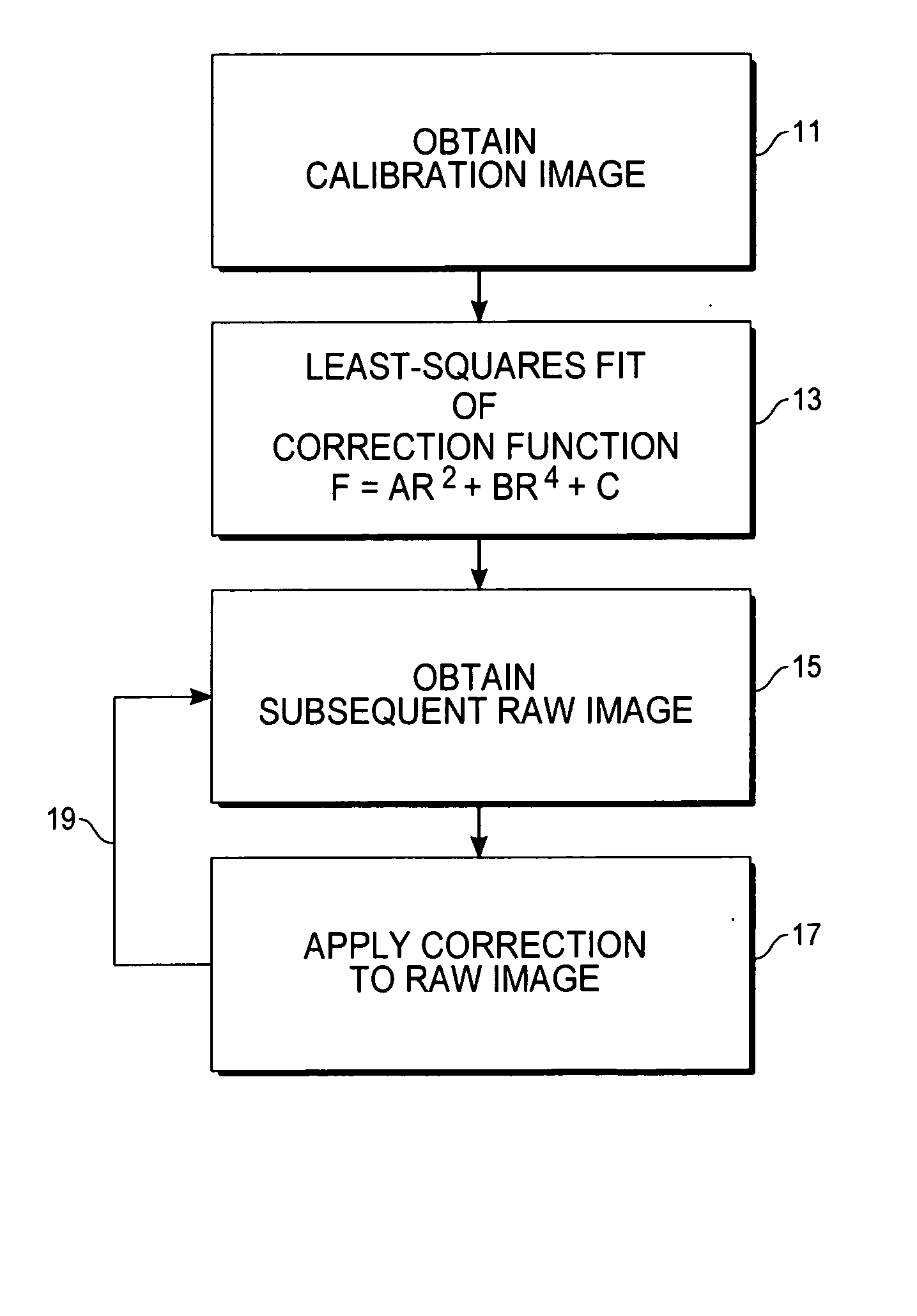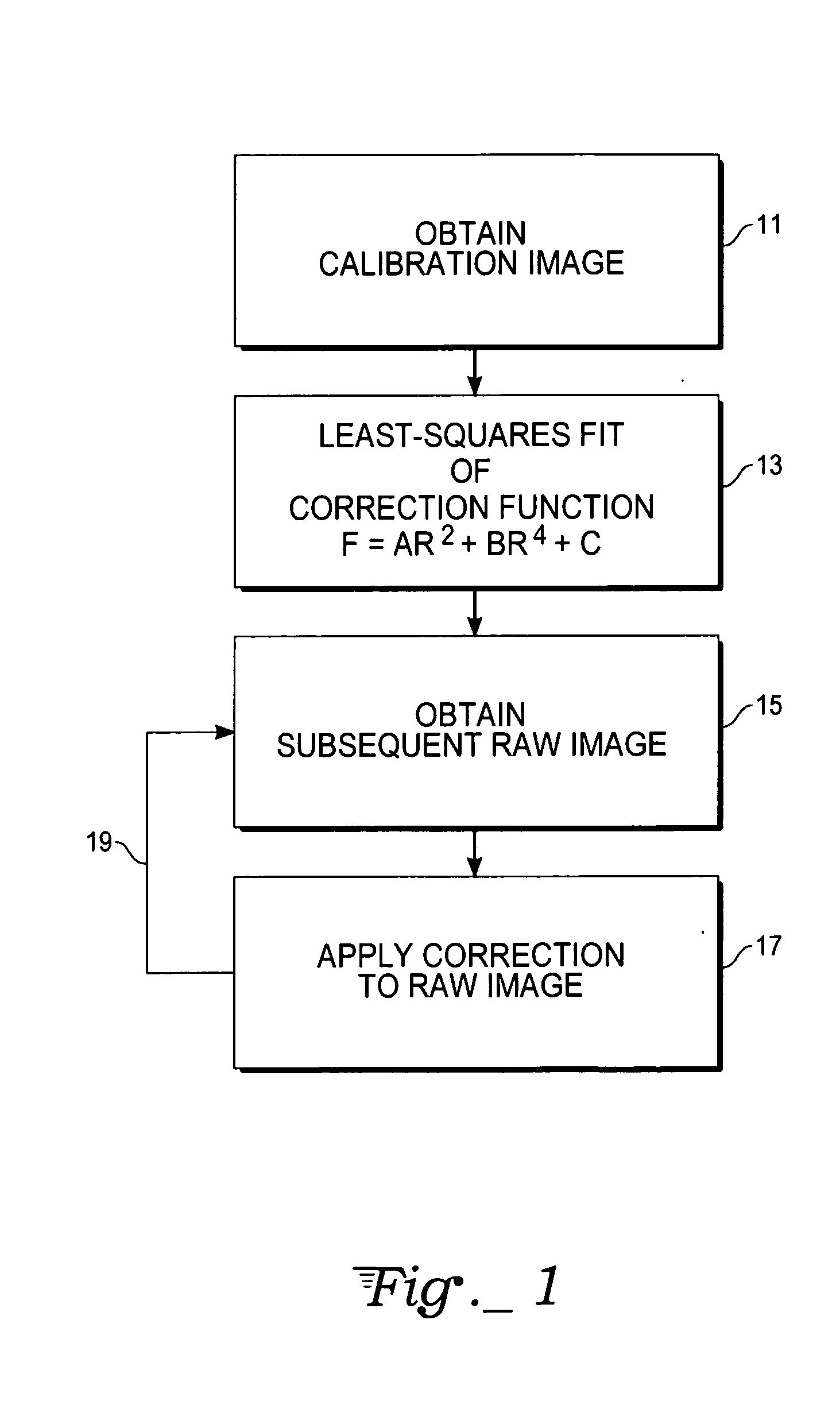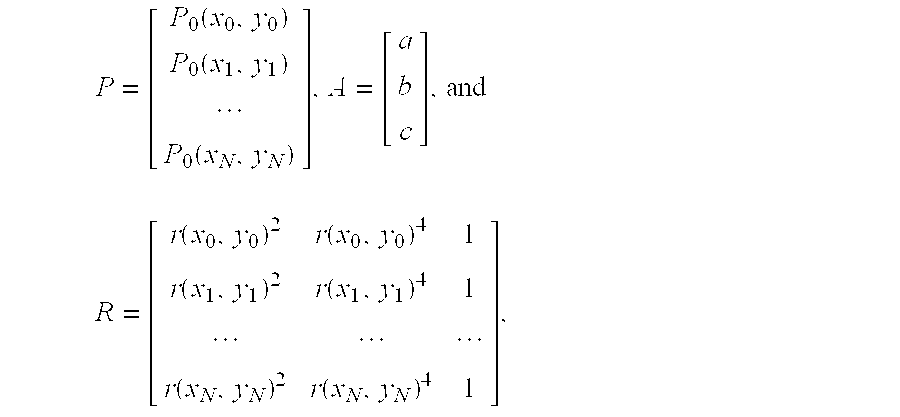Lens vignetting correction algorithm in digital cameras
a correction algorithm and digital camera technology, applied in the field of digital data processing of pictorial information, can solve the problems of inability to adapt to real-time digital cameras, insufficient recursive approach, and insufficient processing hardwar
- Summary
- Abstract
- Description
- Claims
- Application Information
AI Technical Summary
Benefits of technology
Problems solved by technology
Method used
Image
Examples
Embodiment Construction
[0010] With reference to FIG. 1, the basic flow of a vignetting correction method in accord with the present invention begins with obtaining a calibration image (step 11) using an imaging system, such as digital still camera, digital video camcorder, or other imaging instrument. The calibration image may be that of a uniformly-lit gray surface. However, due to vignetting, the calibration image will exhibit a falloff in intensity away from the image center.
[0011] Next, a least-squares fit of the correction function (step 13) is performed. Least-squares (or minimum mean square error) is just one possible technique for fitting the parameters to the imaging characteristics of the optical system. Other fitting techniques could also be used to obtain a set of “best” parameters depending on the optimality criterion used.
[0012] For the present invention, the lens vignetting correction function is chosen to be a radially symmetric 4th-order polynomial,
F(x,y)=ar2+br4+c,
where (x,y) is the...
PUM
 Login to View More
Login to View More Abstract
Description
Claims
Application Information
 Login to View More
Login to View More - R&D
- Intellectual Property
- Life Sciences
- Materials
- Tech Scout
- Unparalleled Data Quality
- Higher Quality Content
- 60% Fewer Hallucinations
Browse by: Latest US Patents, China's latest patents, Technical Efficacy Thesaurus, Application Domain, Technology Topic, Popular Technical Reports.
© 2025 PatSnap. All rights reserved.Legal|Privacy policy|Modern Slavery Act Transparency Statement|Sitemap|About US| Contact US: help@patsnap.com



